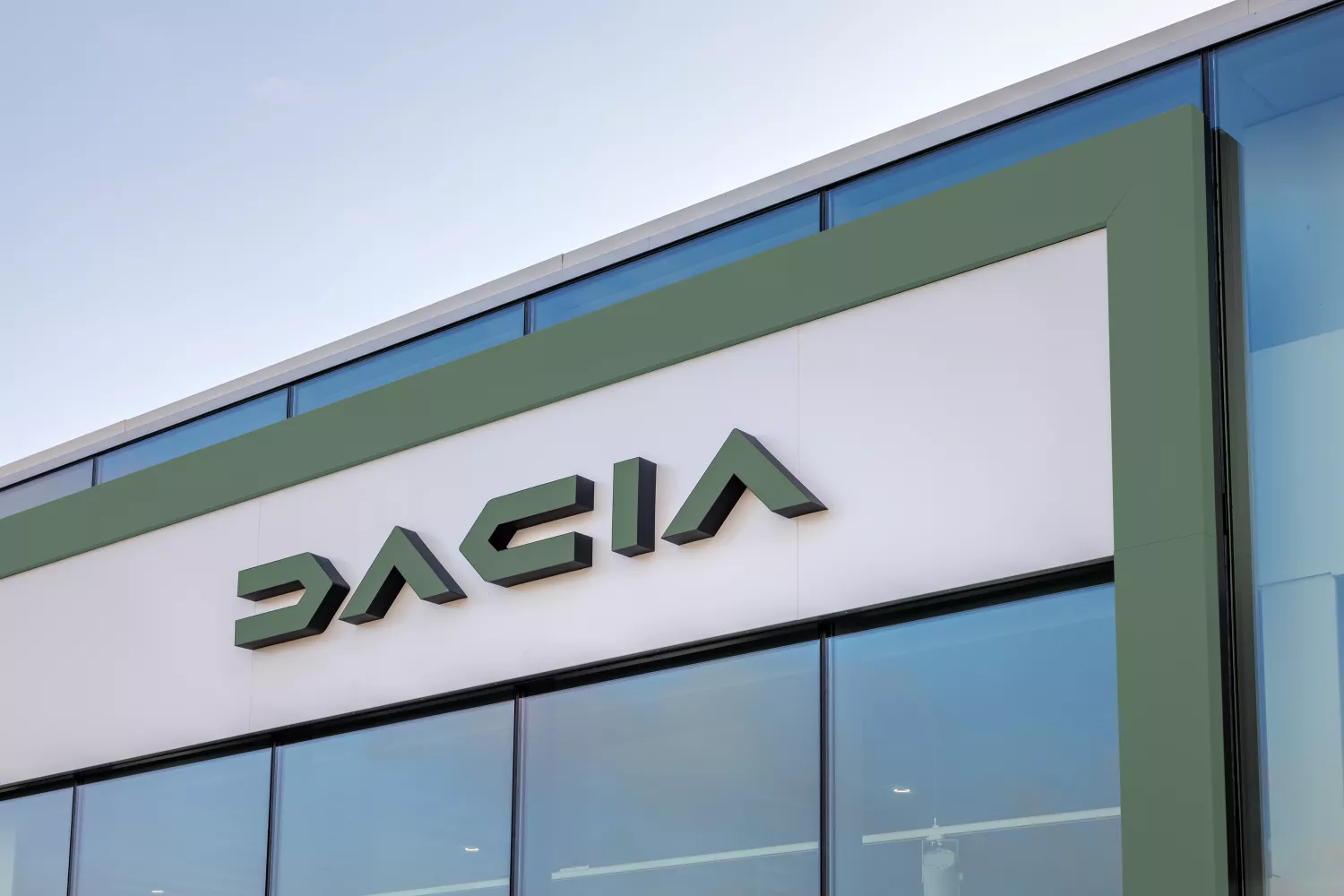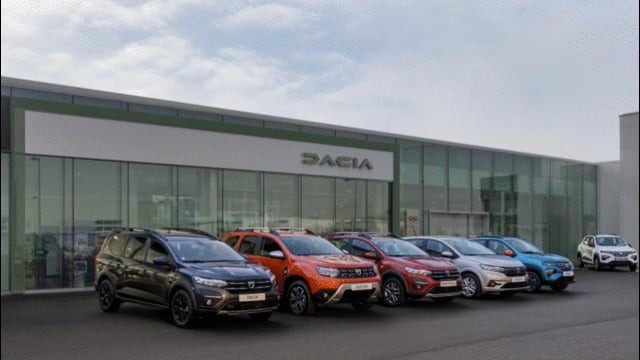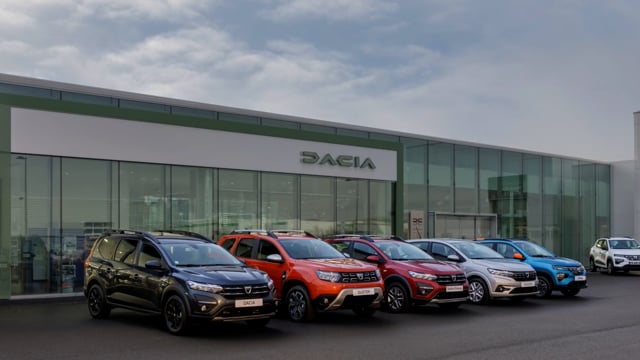Dealerships see Dacia’s new face
2022 sees Dacia turn over a new leaf. Drawing on a new visual identity unveiled last summer, the brand’s design is now entering dealerships. The powerful design stays true to the manufacturers core values and brings greater visibility and a modern edge to the network of dealerships. Thomas, VP in charge of Sales & Marketing Efficiency at Dacia, gives us a look at the pilot test site.
11 February 2022
In just over 15 years, Dacia has repeatedly shaken up the rule book for automotives while always staying true to the lifestyle of its customers. In 2022, Dacia continues to foster its unique positioning with a new concession model, one that merges simplicity with authenticity, nature and technology.
"We started by working on the exterior because it's the most visible part. We also already had a solid foundation, so we didn't have to invent a whole new concept. The challenge was in applying Dacia's new visual identity without changing how dealerships were already structured."
Thomas, Dacia VP, Sales and Marketing Efficiency
A showcase modelled on the brand's new visual identity
When Luca de Meo launched the ‘Renaulution’ one year ago, the aim was to “empower the Renault Group brands, giving them each their own clear and unique terrain to work in.” Then some months later, Dacia seized the opportunity to unveil its brand-new visual universe.
It is first embodied by a minimalist logotype, inspired by objects often found in garages and car shops, such as gears, chains, and tools. Objects that evoke strength, reliability, and functionality. The simple yet precise lines of the emblem – the logo’s very essence – reflect the joining of the ‘D’ and ‘C’ of Dacia, two symmetrical pieces like links in a chain. They symbolise sturdiness and connection. Lastly, Dacia switches from blue to khaki green and a brand-new colour scheme that express a feeling of wide-open spaces and the brand’s outdoor spirit.
Since then, the Design teams have been working on a new face for the Dacia dealerships, one that draws heavily on the visual and graphic design already used in Dacia communications since June 2021.
Outside, a large totem pole marks the entrance to the dealership. Its base is made of wood and its top is in khaki-coloured metal and incorporates the brand’s new emblem in white. A second totem pole, located near the front door, provides practical information. A thick khaki-coloured line runs around the contours of the façade on the main building. Therein lies the showroom for Dacia vehicles. The upper section of the façade, above the main window, features the brand’s logotype with light-box lettering with black painted edges. Khaki-coloured by day, the logotype shows as white when illuminated at night. Finally, flags with the Dacia emblem and splashes of complementary colours such as terracotta and sand provide extra signage.
In late 2021, three design agencies competed for the contract to rework the showroom. It is set to be unveiled at a pilot site mid-way through 2022. The reception area will be an inviting space so that customers will feel at ease when speaking with sales staff and buying a vehicle. Thomas explains, “We will emphasise branding and everything digital thanks to a new customer journey that is more transparent, simple, and unique."

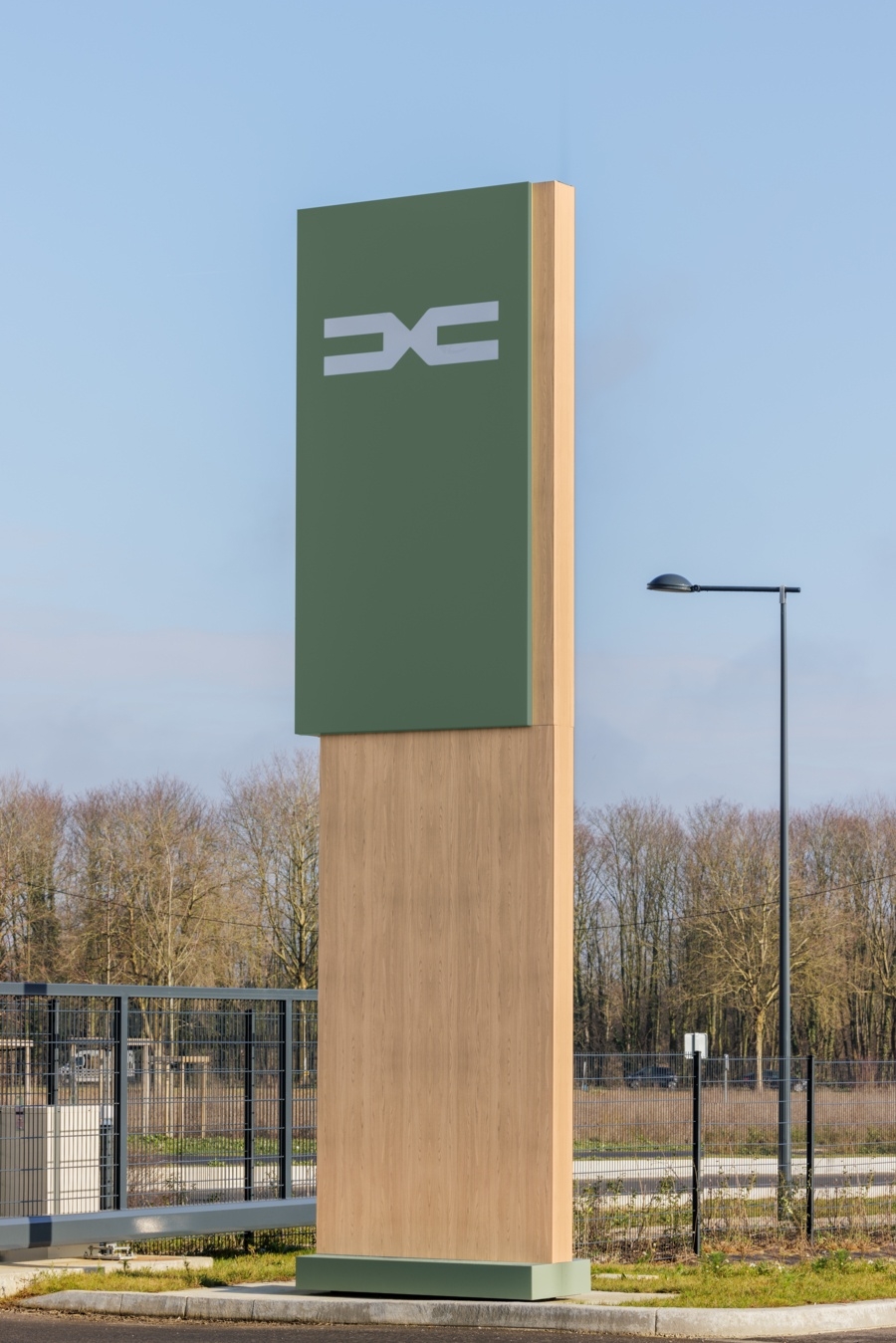
New colours, new emblem, new logo: Dacia’s new visual identity reaches its dealerships
Enhancing Dacia’s brand image
This new look for Dacia dealerships is part of the growth journey for both the brand and its product line-up. Thanks to the makeover, Dacia is not only improving its external visibility and modernising the network, it is also asserting its local presence.
Always true to its core values, Dacia has infused them throughout all areas in its dealerships.
For example, the totem was deliberately designed to be tall and solid looking to embody the brand’s robustness, as does the black outline on the light-box letters. When paired with the solid colour outline for the showroom window, Dacia highlights the brand’s essence as it indicates the location of the dealership with simplicity. The use of wood, at the base of the totem, brings warmth and authenticity to the place. Associated with the khaki colour that is used throughout, it evokes the great outdoors of which Dacia is so fond. Finally, the use of metal and backlit letter boxes brings a touch of modernity and gives an extra edge to the dealership’s overall design.
Visible both day and night, Dacia’s new visual identity asserts its place in the local landscape
The Melun pilot sets an example
Opened in January 2022, the Dacia dealership in Melun is the first site to bear the brand's new external visual identity.
This particular dealership once belonged to a historical partner of both Dacia and Renaults: LS Group (Lamirault Schumacher). Moreover, the building was relatively new, making the overhaul a much easier task. The front façade was a beautifully large window, there was no pre-existing signage, and entry to the site was practical.
Thanks to the Melun dealership, the conceptual design has now been finalised before rolling it out across the whole network of Dacia dealerships in coming months. Dacia's goal is to convert no fewer than 1,000 dealerships by the end of 2022, or roughly 40% of the brand's primary network.

A few figures on Dacia’s new dealership design
Improving the first contact a customer has with their future vehicle
In transforming its points of sale, Dacia wants to enhance the customer experience in dealerships, facilitating their first physical encounter with vehicles from its line-up.
To this extent, the colour scheme now used to decorate the dealerships is easily identifiable and signage (large totem, flags) around the main building is clearly visible from far away. At night, the white backlighting used for the emblem and logo acts as a beacon, drawing customers to the dealership’s location.
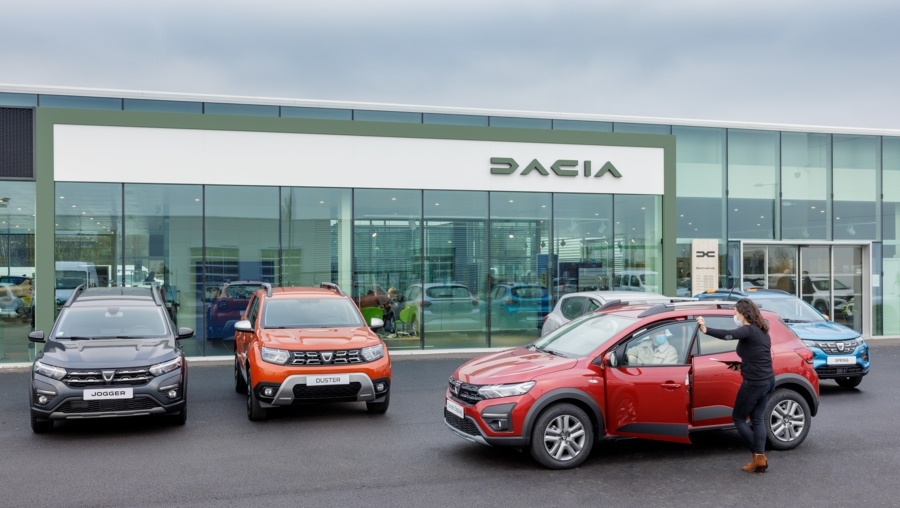
"Through a combination of authenticity and a warm welcome, Dacia wants its customers to feel good."
The brand is drawing on the strong values that make up its DNA – robust, simple, pared back – and wants customers to see themselves in new identity when they come to the dealership.
The use of materials such as wood and colours such as khaki-green reflect the closeness between Dacia and the great outdoors. “This outdoor spirit is a strong feature that customers come looking for in our dealerships," says Thomas. It crystallizes a need to reconnect with one's environment and share simple pleasures with loved ones.
The modern, quality finish on features such as the letters that stand out from the façade, day and night, assert Dacia’s presence among its competitors.
The concept behind each design feature highlight Dacia’s desire to bolster the bond of trust is has fostered with its customers.
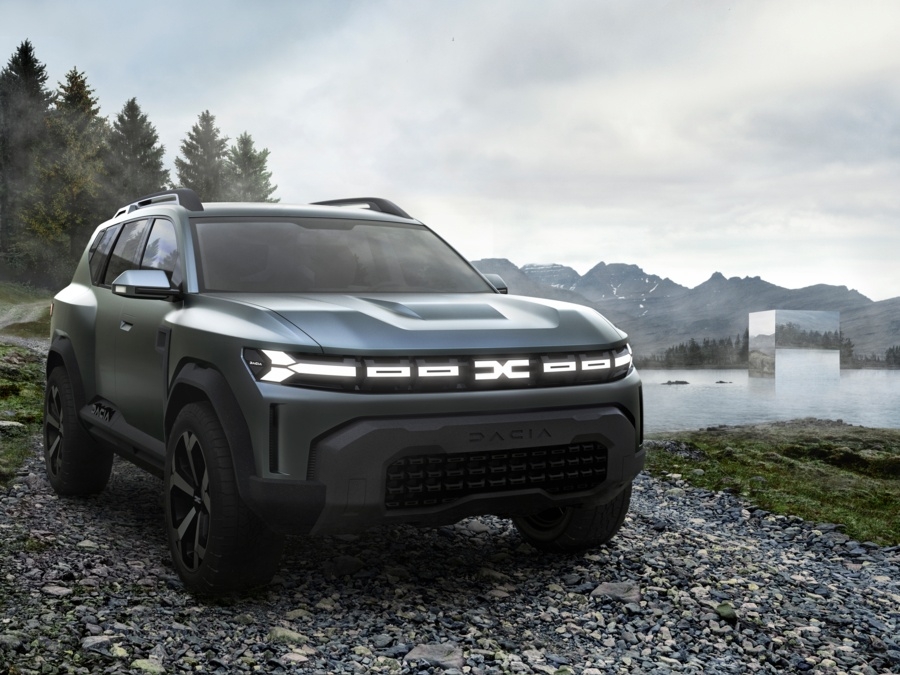

Bigster Concept features the elements of the new Dacia identity that will soon be applied to the whole range
What next?
While the mass roll-out of the new dealership look is planned for March 2022, people will have to wait a few more months for the Munich Motor Show (IAA Mobility) before seeing what the new identity will look like on the grilles of Duster, Sandero, Spring, and even the All-New Jogger that was unveiled in September 2021.
Unveiled a year ago, Dacia Bigster Concept gave a taste of what the new face of Dacia cars are set to look like as they proudly sport a brand-new logo and emblem.
The line-up will complete its metamorphosis in autumn 2022 and will mark the third phase of Dacia's new identity roll out.
Stay tuned for more…
Born in 1968 then launched throughout Europe and the Mediterranean region in 2004, Dacia has always offered cars with the best value for money, while constantly redefining that which is essential. A disruptive brand, Dacia designs vehicles that are simple, versatile, reliable, and that suit the lifestyles of its customers. Dacia models have become market benchmarks: Logan, a new car at second-hand prices; Sandero, the best-selling private car in Europe every year since 2017; Duster, the most sold SUV to retail customers in Europe since 2018; Spring, European champion of affordable electric mobility; Jogger, the versatile C-segment family car. Present in 44 countries, Dacia has sold more than 8 million vehicles since 2004.
Media library (10)
- All (10)
- Images (8)
- Videos (2)
Born in 1968 then launched throughout Europe and the Mediterranean region in 2004, Dacia has always offered cars with the best value for money, while constantly redefining that which is essential. A disruptive brand, Dacia designs vehicles that are simple, versatile, reliable, and that suit the lifestyles of its customers. Dacia models have become market benchmarks: Logan, a new car at second-hand prices; Sandero, the best-selling private car in Europe every year since 2017; Duster, the most sold SUV to retail customers in Europe since 2018; Spring, European champion of affordable electric mobility; Jogger, the versatile C-segment family car. Present in 44 countries, Dacia has sold more than 8 million vehicles since 2004.
